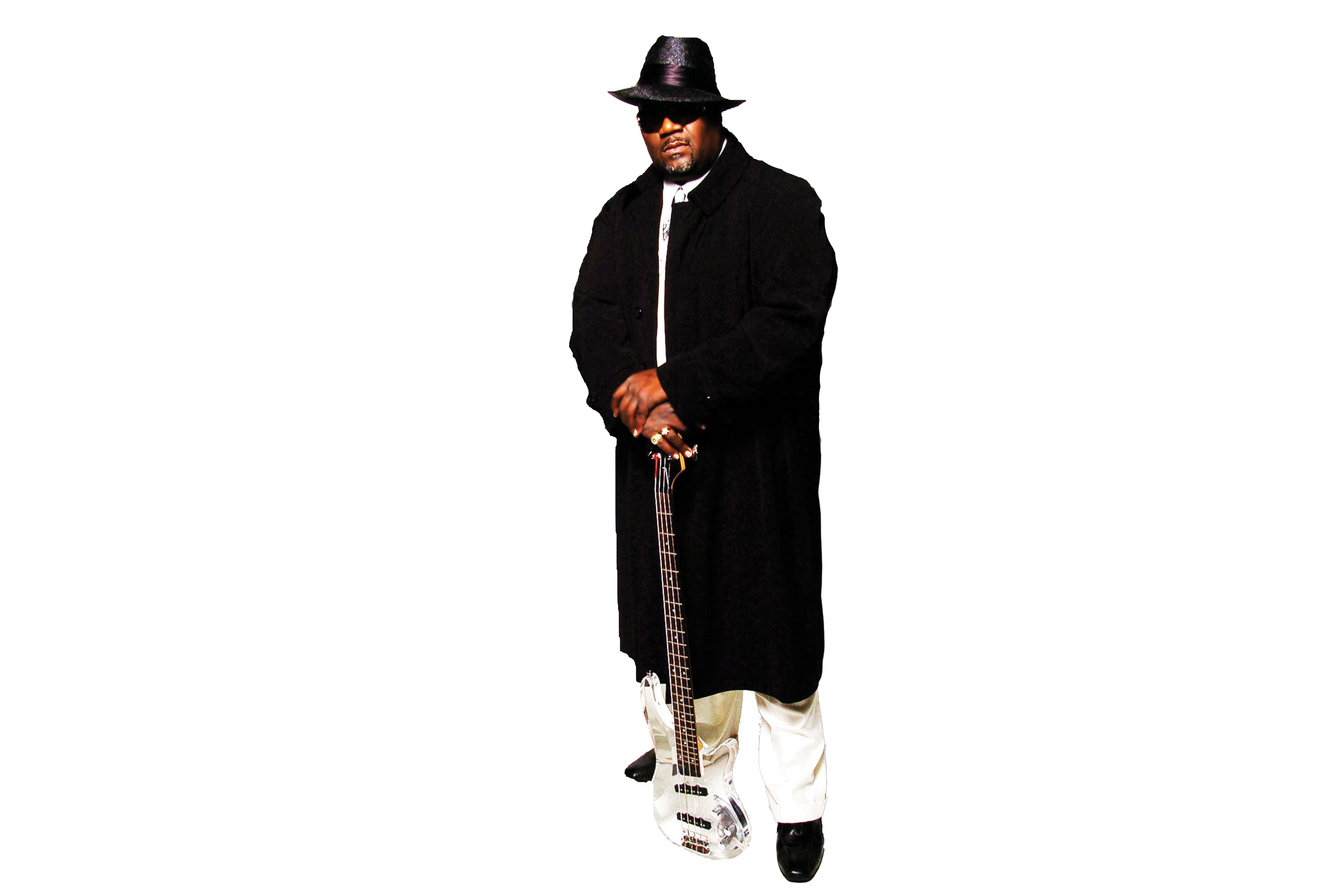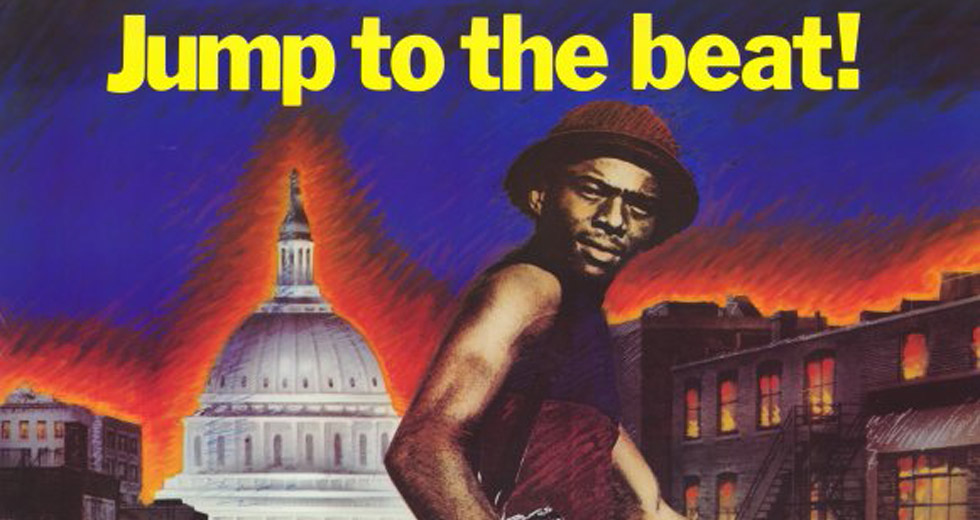Good to Go? The story of Go-Go’s The Harder They Come
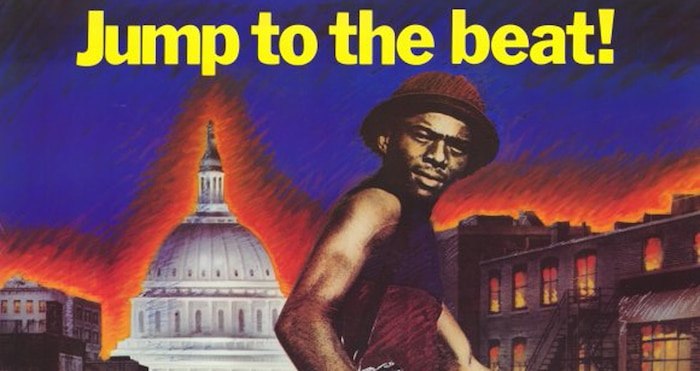
Go-go is a uniquely Washington D.C. invention. The genre, created by guitarist Chuck Brown, is indebted to funk but it also touches on R&B, hip hop and always features more congas than you think should be necessary... until you hear the result, that is. Island Records boss Chris Blackwell felt the same way in the mid-’80s. His label had enormous success in bringing various genres to the shores of UK, most notably with the likes of Bob Marley, Jimmy Cliff and King Sunny Adé.
In the early ’70s Blackwell had been an uncredited executive producer on Cliff’s breakout film The Harder They Come, and he sensed that a similar approach might work in introducing go-go to the wider world. It didn’t. But while Good to Go is (thankfully) largely unseen today, the film represents an excellent prism from which to ponder why go-go has never reached far beyond the borders of D.C. Go-Go Live author Natalie Hopkinson takes us through the story of what might’ve been.
Congas are the heartbeat of go-go, D.C.’s signature brand of funk music that has been the soundtrack to black Washington for the past four decades. But the first annual King of the Congas Battle this January was something brand new: a competition that mixed the sudden-death style of a college basketball tournament, the expert judges of American Idol and the funk. Thirty-two drummers from the hottest go-go bands across the city went head-to-head before hundreds of onlookers into wee hours of a Monday morning.
One drummer pounded at the congas wearing a diaper, pacifier and bib. Another did spins, and somehow kept the beat while blindfolded. Others mixed Latin beats, hip hop, salsa and traditional go-go styles. One brought in their hype man on the mic; another brought in sound effects. “Smoke, he from Kenya,” joked the night’s emcee, a host of gogoradio.com, as the crowd laughed knowingly at the undeniably African style of the man who would be crowned King of Congas.
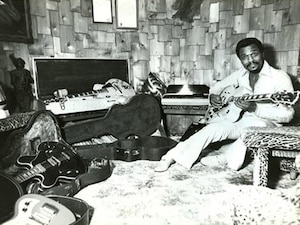
Go-go music was created in the mid-1970s by the late, great guitarist Chuck Brown who died last year at age 75. Today, the genre is far from its mid-1980s zenith when the music’s relationship to Washington, D.C. was roughly analogous to hip-hop’s relationship with the Bronx. But go-go is still big business, packing D.C. (and increasingly suburban Maryland) clubs with the kind of down home sultry stank that could not be farther than the white marble capital shown on TV.
Ever since I published my book Go-Go Live last year, the question I’m most commonly asked is why did go-go stay in D.C.? Why didn’t it go national or international? It was not for lack of effort. And the story of the recording industry’s spectacular failure to take over go-go makes a powerful statement about how black culture can resist, and keep control of its own destiny and profits.
Among the first global executives to see the global potential of go-go was Chris Blackwell, a white, Jamaican-born, UK-educated music aficionado who founded Island Records, and introduced reggae artists such as Bob Marley and Jimmy Cliff to the wider world. In the early ’80s, Blackwell was impressed when he heard Brown’s national go-go hit “We Need Some Money” on New York City radio, and watched thousands of young people flock to a live show in Washington. He wanted a piece of the action.
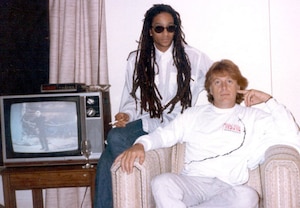
Blackwell’s plan was to repeat reggae’s crossover success by priming the audience through film. This worked with Island’s 1972 film, The Harder They Come, which launched the star of Jimmy Cliff. The low-budget go-go film was called Good to Go, but the title lied from the very beginning when Blackwell’s British co-producers arrived in Washington flanked by bodyguards.
“We heard it’s a bunch of kids stoned on PCP dancing around,” producer Doug Dilge told the Washington Post in a 1985 interview. “When the music stops, fights break out. If you’re white you don’t go into these scenes because you’re in an incredibly dangerous situation.” The racial politics on the set only got worse when Blackwell fired a black director, a Londoner named Don Letts in the middle of filming.
Letts probably got lucky. The film was pretty terrible, with a plot ripped from the headlines. A corrupt cop convinces a white reporter (played by Art Garfunkel) to wrongly blame the brutal rape-murder of a white nurse by drugged and crazed young black men at a go-go club, producing a headline that claims go-go causes violence. A black music mogul – based on the real-life go-go mogul Max Kidd – fights to set the record straight. Gunfights and concert scenes ensue. Innocent people are framed, the media censors the truth and, yes, there are even more gunfights along the way. In the grand climax, the white newspaper reporter fights his way to the stage of a massive go-go show and tells the truth about what happened to a crowd of cheering go-go fans.

Black Washington was appalled at the movie’s racist paternalism, as were the film critics. “Blackwell, Dilge, et al. were in search of... a highly volatile mixture of street violence and niggers crazy on drugs, all highlighted by the blackest music outside of Lagos, Nigeria,” snarked Kip Lornell and Charles Stephenson Jr., authors of The Beat: Go-Go Music from Washington D.C. “It was beginning to look like the ’70s when blaxpoitation films like Shaft and Cotton Comes to Harlem were commonplace. If only Island had aimed so high!”
Letts offered his own theory for why the movie failed in his memoir Culture Clash: “Go-Go did not translate well into film, which is not a put-down; if anything it is praise because there is something about it that is intangible. It is almost too hot for vinyl and definitely too hot for celluloid.”
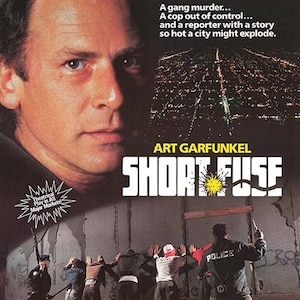
The movie tanked. But the excitement and international interest helped create a fertile period for go-go in the mid-1980s. Brown and go-go bands such as EU, Trouble Funk and Rare Essence toured outside Washington, and there was a brief go-go craze in London. And ironically, another Blackwell investment in film ended up giving more exposure to go-go. Facing money problems, Island dropped the director Spike Lee’s project, a musical called School Daze, but not before introducing the young director to go-go music.
So even after another company picked up the film, Lee decided to create his own go-go song and dance and include it in the film. “Da Butt” became a 1988 hit, topping the R&B charts and reaching number 35 on the Billboard Hot 100. Some go-go purists never fully embraced the song as true go-go. But even interpreted through Lee’s black middle-class, Brooklyn-born lens, go-go could be seen for the jubilant, joyous percussive bacchanal more closely recognizable to Washingtonians. No one remembers Good to Go (also sometimes known as Short Fuse). School Daze, on the other hand, remains an iconic portrait of black music and life in the ’80s.
Aside from brief flashes of national media attention and crossover record sales by Brown, Trouble Funk, DJ Kool, EU and the Washington-born rapper Wale, go-go’s live show is still king. Today, go-go is still a mom and pop business, a community-based art form serving the nation’s capital. For all the obsessive talk I hear on the go-go scene about “going national,” I am not convinced people really want it to happen. A pop-friendly format necessarily changes the music from something that can be defined as go-go.
And more important, go-go is still big business. Instead of going to New York or Los Angeles or London to the corporate music structure and the lawyers, agents and press handlers that run it, those dollars stay and circulate in the black community of Washington, D.C. It is like Bruce Brown, a D.C. filmmaker whose two features, Streetwise and Divided City, organically integrated go-go, told me in 2003: if go-go went national, “a lot of people would lose their jobs.”
And go-go has gained much by staying against the grain. A whole generation of music fans believes it is optional to pay for the latest record release. However, that generation has no qualms about paying top dollar to see its favorite music stars in concert. Go-go’s business model stayed against the grain long enough to come back into style. As Letts wrote in Culture Clash: “Go-go was the ultimate black tribal rebel sound in Washington, home of the White House and the capital of America. People tried to demonise the whole scene saying it was all about drugs, but in reality that was only a small part of it. . . . The bottom line is: you don’t know the complete story of contemporary black music if you don’t know Go-Go.”
I had to agree as I sat there last month at the first annual King of the Congas awards. I was literally sitting on the edge of my seat, as I watched to see what in the world the drummers would come up with next. Each time I thought there is no way the next drummer could possibly match the precision, strength or creativity of the previous performance, I was dead wrong.
At the end of the night it came down to two drummers, Pooh and Smoke. Pooh was a young kid who played with the Critical Condition Band, a leader in the new generation style of go-go called Bounce Beat. With his wild locks swinging, Pooh had swag for days. His hands were versatile, wild but never sloppy, always inventive, never predictable as his conga drumming spanned a vast array of musical genres, “45 styles” as he bragged. I was pulling for this young drummer who flirted with the edge of disaster and managed to bring it back in the pocket in each round.
As it ever was, go-go is something you have to see live.
The crowd dominated by old heads was tickled by Pooh’s performance, but clearly thought the youngster had a lot to learn. Their favorite was Smoke, a 20-year go-go veteran who plays with the popular Da Mixx Band. The final round took place a little after 2 AM on a Monday. Pooh made a respectable showing, but he didn’t pace himself across the allotted two minutes properly and seemed to run out of creative steam. Meanwhile Smoke’s hands slammed against the congas with fierce precision and the breezy stamina of a marathon runner at mile 5. In the final round, Smoke smoked him. Smoke was the undisputed King of the Congas.
It was one of the most dynamic experiences I have ever had in music. But whenever I watch the many YouTube links that have since been posted, something about it falls flat and cold. The videos don’t come close to conveying the drama, the explosiveness, the raw electricity that was in the room that night. As it ever was, go-go is something you have to see live.
Natalie Hopkinson is a Washington, D.C.-based writer. This essay was adapted from Go-Go Live: The Musical Life and Death of a Chocolate City (Duke University Press, 2012.) Follow her on Twitter.
